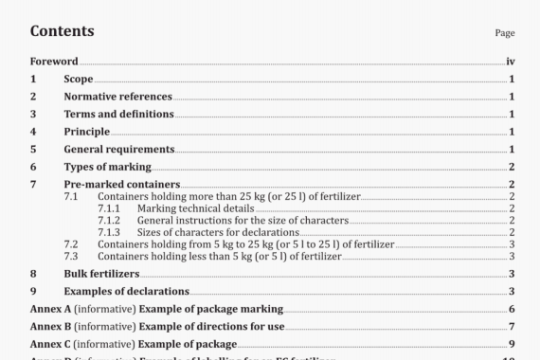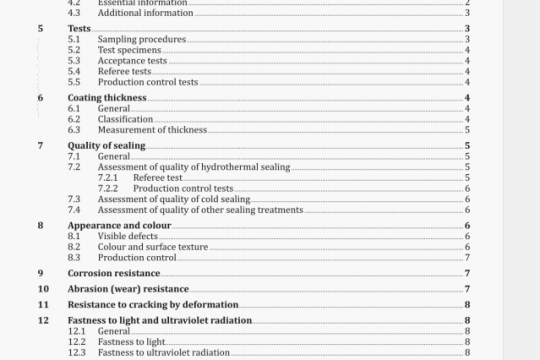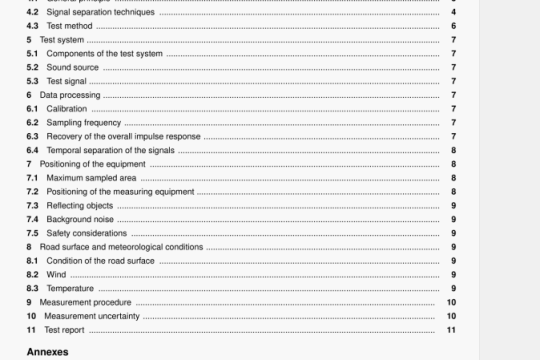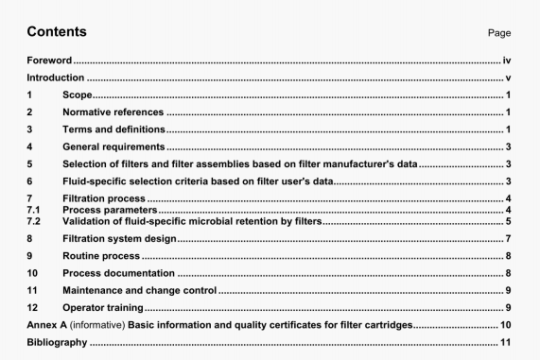ISO 15620:2000 pdf download
ISO 15620:2000 pdf download.Welding – Friction welding of metallic materials.
4.3.2 Features
Friction welding machines can be equipped with the following options:
— loading equipment;
— unloading equipment;
— turning units for facing, flash removal, machining;
— shearing unit to strip the flash;
— extended memory for welding programmes;
— weld identification unit;
— angular orientation;
— monitoring;
— identification;
— in process proof testing.
5 Quality requirements
5.1 General
The regulations and recommendations which govern other welding processes apply only in part to friction welding.
Emphasis should be placed on the avoidance of imperfections rather than on developing methods to find them. An important prerequisite for ensuring weld quality is the uniformity and consistency of the component to be welded. For this reason, adequate quality assurance measures shall be taken during the pre-welding, welding and post- welding process operations.
5.2 Pre-welding conditions
5.2.1 Condition of raw materials
To ensure repeatable properties of friction welds which remain constant within a friction welding series the following conditions should be maintained
— chemical analysis;
— structure;
— strength and hardness;
— dimensional and geometrical tolerances;
— supply conditions of the materials to be joined.
5.2.2 Preparation of the components to be welded
Unless otherwise required by the design specification the following should be adhered to:
The end of each component shall be prepared so that the faying surface lies in a plane at right angles to the axis of rotation, the end being cut square. This end can be tapered if required so that the area of the faying surface is reduced for the early stage of the welding cycle. The length of the taper shall be not greater than 50 % of the burnoff length for each component and sufficient to ensure that the plane of the weld interface is on the parallel portion of the component, or at such a position as is indicated on the drawing agreed between the contracting parties.
Dirt, grease, rust and other surface oxides or protective films shall be removed from the faying surfaces before the components are placed in the machine, except where surface contamination is shown to have no detrimental effect on joint properties.
Surface irregularities on the faying surface, e.g. centre turning holes, shall only be allowed where they do not cause harmful effects.
5.2.3 Component holding
The torque and axial forces resulting from the friction welding cycle are normally resisted by the tooling. The clamping force shall be not so great as to deform or mark the components beyond acceptable levels. Suitable backstops are used wherever possible to prevent axial slippage. Plugs may be used to provide additional support when gripping hollow components.
The components to be welded shall be set in the machine so that their axes lie within the limits specified for concentricity and alignment.
To achieve the required alignment it is sometimes necessary to machine or clean the surfaces of the components to be clamped.
Particular care is necessary with regard to tooling and alignment when welding hollow sections having an outside dimension that is large relative to the wall thickness of the component.
The overhang shall not be so short as to cause unacceptable chilling of the component or so long as to cause unacceptable misalignment or vibration of the opposing faces during the friction and forge phases.
The two components should be clamped wherever possible so that the overhang of each is equal, unless the difference in composition or size of the two components makes it desirable for them to have different overhangs, either to achieve a heat balance or to permit effective work holding.
5.3 Post-welding treatment
Where necessary, further procedures as machining and/or post-weld heat treatment of friction welds shall be carried out in accordance with the expected environmental operating conditions.
5.4 Quality assurance
The system of quality control employed shall take into consideration the following factors:
— production rate and batch size;
— size and design of weld ments;
— economic considerations;
— intended operating conditions.
The system employed shall be sufficient to ensure that consistent and satisfactory weld quality is maintained on a batch or individual basis.
NOTE: The system should ensure that procedures are in place to ensure regular calibration of the friction welding machine.
Production quality control records shall be kept, the form and content of which shall be agreed between the contracting parties.
Guidelines for the level of quality assurance to be used are given in Annex D.
Whether destructive or non-destructive testing methods can be applied depends on the special use of the welded components. A list of destructive and non-destructive testing methods which are generally suitable for friction welding is appended in Annex E. Possible testing procedures are given to facilitate the choice of the most appropriate method.




